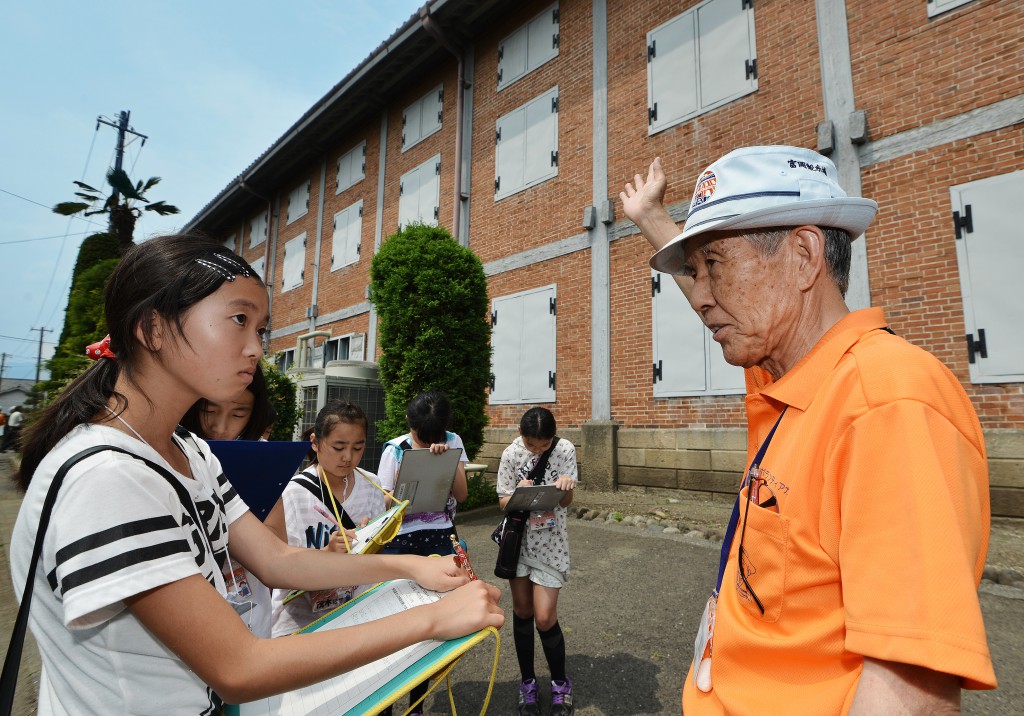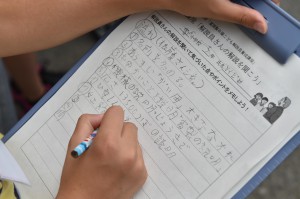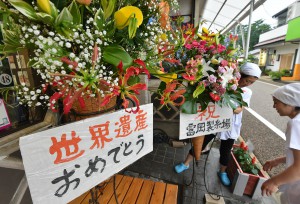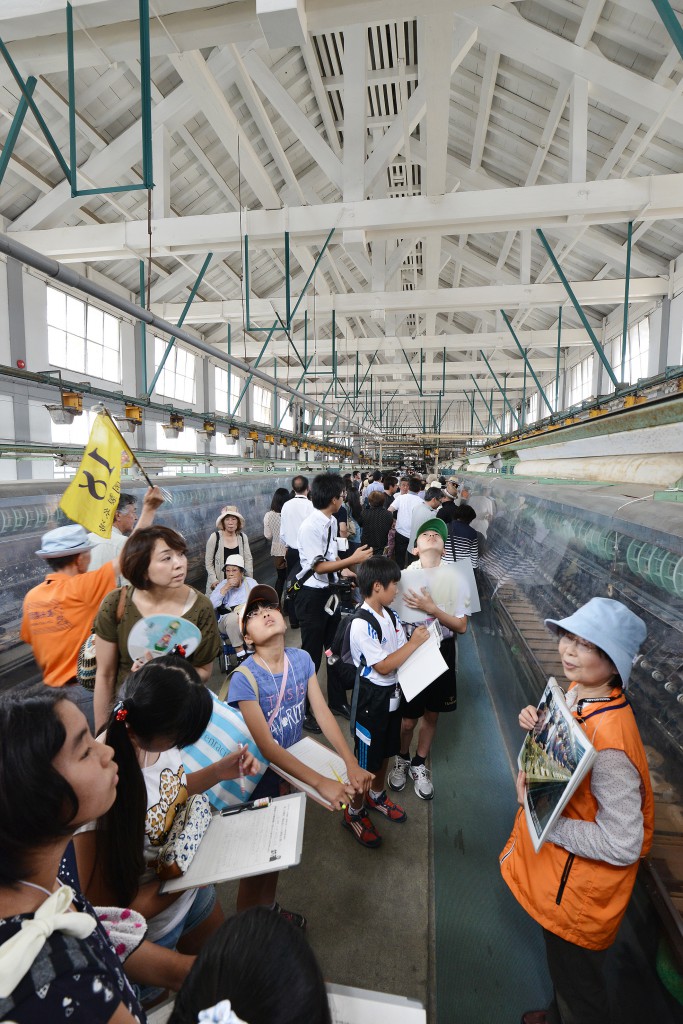Kotaro Yamada
– Junior Tour Guide Training Program at Tomioka Silk Mill –
(Tomioka-shi, Gunma Prefecture)
The city of Tomioka in Gunma Prefecture is now offering its first course targeting local children who are interested in becoming junior tour guides at a new World Cultural Heritage, Tomioka Silk Mill. The program aims to provide children with thorough knowledge of the history and cultural importance of the mill and let them have opportunities to lead visitors.
“How big is the mill?” asked a student. “It’s three times bigger than the Tokyo Dome or seven times bigger than a soccer stadium,” answered Takatoshi Sato, 74, a veteran guide who is also serving as an instructor for the course. The school children were asking dozens of questions, taking a detailed note.
The five-day course is offered to a total of 27 elementary school students in the fifth and sixth grades at Tomioka Elementary School and Tomioka Nishi Elementary School. The program started in June. On the second day, the children had an opportunity to go inside the buildings which are almost exactly the same as they were when the mill was founded in 1872. Veteran tour guides introduced some interesting stories about the buildings as well as tips to tell stories in a simple way.
On July 28, the last day of the course, the children will actually lead visitors as junior tour guides. A sixth grade student of Tomioka Elementary School, Mako Sudo, 12, eagerly said, “It was surprising that one of the closet things to me became the world heritage. I would like to appeal the greatness of the Tomioka Silk Mill as clearly as possible using photos and illustrations.”
On June 21, 2014, the silk mill and related sites were registered as the World Cultural Heritage. This is a result of 10 years of efforts of local residents who had long been appealing the magnificence and importance of the complex as storytellers.
Sato who has been a guide for 10 years said, “The registration is only the first step. It’s important to pass it down to our children as a local heritage.”
Tomioka Silk Mill and Related Sites (Gunma Prefecture)
They became the 18th World Heritage property in Japan on June 21, 2014. The Tomioka Silk Mill was built in 1872 by the Meiji government of Japan. Its brick buildings are still preserved in near-perfect condition. The complex consists of four historical sites: Tajima Yahei sericulture farmhouse in the city of Isesaki (a prototype for modern sericulture farmhouses); Arafune cold storage in the town of Shimonita (a storage facility for silkworm eggs that makes use of natural cold air); Tomioka Silk Mill in the city of Tomioka (a mill for reeling cocoons and spinning raw silk); and Takayama-sha sericulture school in the city of Fujioka (a school for the dissemination of sericulture knowledge).

Visitors can have a close look at the automatic reeling machines which are exactly the same as they were when they are in actual use.
(June 29, 2014)





